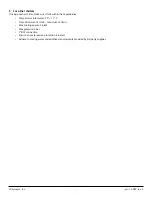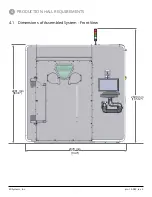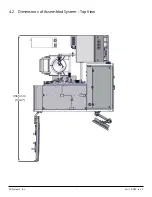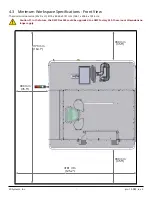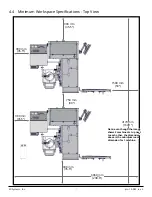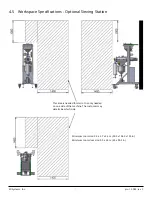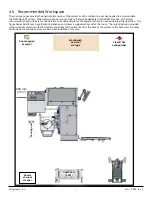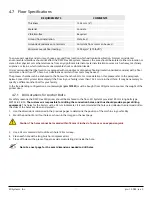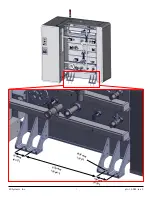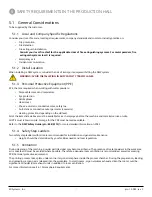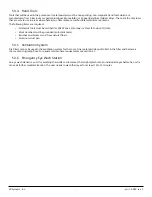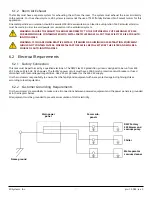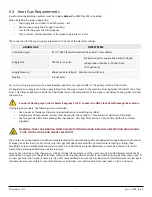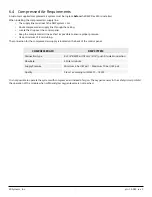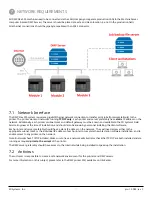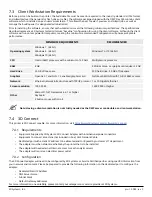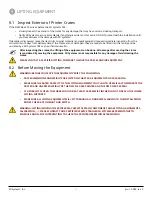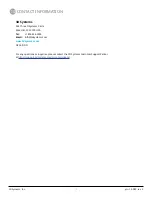
3D Systems, Inc.
25
p/n: 15-D99, rev. C
5
SAFETY REQUIREMENTS IN THE PRODUCTION HALL
5.1 General Considerations
To be supplied by the customer.
5.1.1
Local and Company Specific Regulations
Consider your local fire code, local legal requirements, company standards and common industry practice on:
• Fire prevention
• Fire detection
• Fire extinguish installation
Consult your local fire chief for the applicable class of fire extinguishing systems. For metal powders, fire
extinguish system class D is required.
• Emergency exit
• Incident communication
5.1.2 Install Location
When installing a DMP system, consider the risk of transport equipment hitting the DMP system.
WARNING: AVOID INSTALLATION IN BUSY FACILITY TRAFFIC LANES.
5.1.3 Personal Protective Equipment (PPE)
PPE, that are required when working with metal powders:
• Disposable masks and respirators.
• Eye protection
• Nitrile gloves
• Head cover
• Shoes: anti-static, conductive soles, safety toe
• Anti-static or conductive outer garments (coveralls)
• Hearing protection depending on the dB level.
All of the items listed above must be available for each employee before the machine and materials arrive on-site.
All PPE must remain on site. Storage for the PPE must be made available.
Refer to the
DMP Safety Guide (p/n: 80-D0712)
for more detailed information on PPE’s.
5.1.4 Safety Step Ladders
Two safety step ladders with rails are recommended for installation and general maintenance.
• Height: Should be determined by your facilities needs and local regulation.
5.1.5 Ventilation
During cleaning of the machine, powder particles/dust may become airborne. The presence of metal powders in the work area
air is unsafe and must be avoided where possible. Therefore, adequate room ventilation is recommended, as well as wearing
PPE (Personal protective equipment).
The printing process takes place under an inert argon atmosphere inside the process chamber. During the preparation, loading,
and unloading, argon gas is released into the workplace. In small rooms, argon volumes exhausted into the room could be
significant. Consider local exhaust units in addition to room ventilation.
For more information see § 6.1 Atmosphere Requirements.



